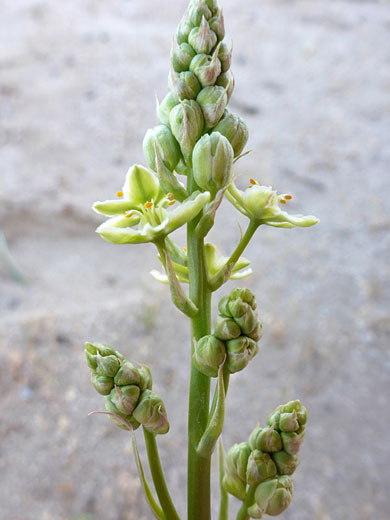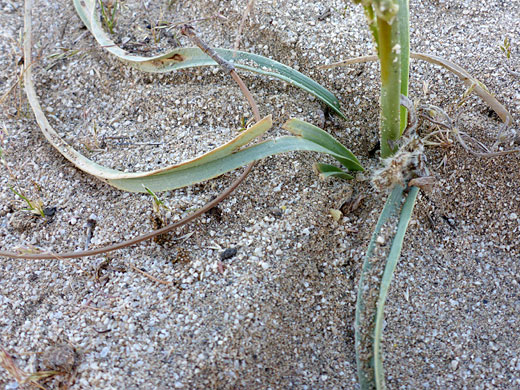Toxicoscordion Brevibracteatum, Desert Death Camas
Plants > Wildflowers > Melanthiaceae > Toxicoscordion Brevibracteatum

Elongated, developing flower cluster; toxicoscordion brevibracteatum, Alpine Butte Wildlife Sanctuary, California
Common name:
Desert death camas
Family:
Scientific name:
Toxicoscordion brevibracteatum
Main flower color:
Range:
South California
Height:
Up to 24 inches
Habitat:
Sandy places in deserts, between 2,000 and 6,000 feet
Leaves:
Linear, up to 12 inches long and 0.4 inches wide
Season:
April to May
Identifying characteristics of toxicoscordion brevibracteatum include the relatively short stamens - shorter than the petals - and the length of the subtending bract, which is less than half that of the pedicel. The inflorescence is a narrow, elongated panicle extending up to 12 inches along the upper part of the stem. The six ovate tepals (or perianth parts) are white to pale cream in color, with a green gland towards the base, and are around 0.3 inches in length. Tepals are of two types, inner alternating with outer, and the inner are clawed, narrow at the base. The stamens have curving filaments, expended and flattened near the base, and yellow anthers.
The leafless stems and the narrow, linear, basal leaves are hairless. Leaves are folded up along the midvein. Plants grow from black, egg-shaped bulbs up to 1.5 inches in diameter.
The leafless stems and the narrow, linear, basal leaves are hairless. Leaves are folded up along the midvein. Plants grow from black, egg-shaped bulbs up to 1.5 inches in diameter.
All Contents © Copyright The American Southwest | Comments and Questions | Contribute | Site Map



